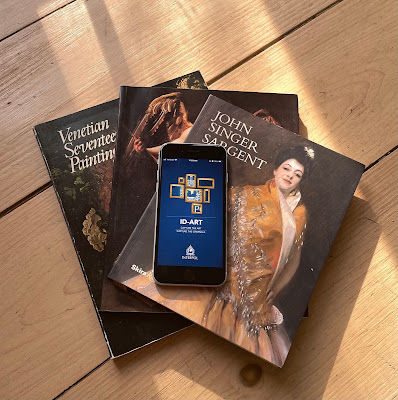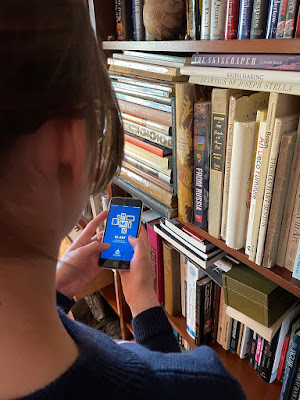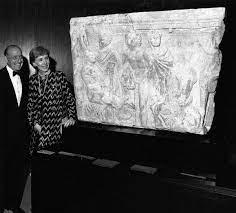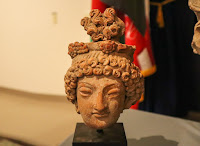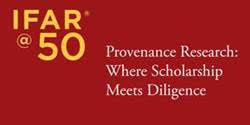 |
| The Cistercian abbey of San Galgano |
The Carabinieri for the Protection of Cultural Heritage (Comando Carabinieri Tutela Patrimonio Culturale - TPC) have recovered the Reliquary of San Galgano, a work possibly attributed to the 14th-century goldsmith Ugolino di Vieri. The Medieval Christian object of faith was stolen from the Seminario Arcivescovile Siena more than 30 years ago, in 1989.
Over time, by accident and changes, little remains of San Galgano except for some of the church's relics and a fantastic sword which is a story unto itself. Most of the accessory structures of the Cistercian abbey are gone, leaving us with only the roofless building's stone skeleton with its grouped piers and ribbed vaults. Despite its ruin, it is an impressive Gothic architectural masterpiece and one of the most exquisite religious structures in Tuscany.
Recovered along with ten other stolen works of art, the Reliquary of San Galgano's is believed to have been stolen as a
theft to order. And as sacrilegious as that may sound, given what reliquaries are used for, stealing venerated religious objects is not as uncommon as one would like to think.
Nor should the theft of these types of liturgical items be underestimated, as their intrinsic worth is more than the sum of their antiquarian value. Their uniqueness being more that just the costly materials they are made from, or the fame of the artist who crafted them.
Creepy though it may be, their true value lies in the “valueless.” For its the bits and pieces, things like the skull, jaw, left ilium, or even
the foreskin of the departed that catch the eye of Church devotees as well as thieves. In 1087, shortly before the First Crusade, sixty-two sailors from Bari stole the actual bones of St. Nicholas, interred at a church in Myra, a city in modern-day Turkey. Back then, in the beginning of the High Middle Ages, religious relics were big business. Having a relic brought pilgrims, and with pilgrims came money. So it's no small wonder that a new church, the Pontifical Basilica di San Nicola, was built afer his bones were taken, as Nicholas' disinterred remains drew quite an audience.
St. Catherine of Siena, who died in Rome in 1839 lies buried inside the Basilica of Santa Maria sopra Minerva. Her dismembered holy head however, was parted from her body and secreted back to her home town where her patrons in Siena inserted it into a gilt bust of bronze. Other parts of her body are scattered inside and outside of Italy.
But not all thefts where committed by the religiously well intentioned, intent on veneration. Flash forward to the modern era and the reliquary of San Franco, known as the Hermit of Gran Sasso, was stolen in Assorgi in 1974 only to be found later with an antique dealer in Milan. Likewise, the remains of the immensely influential philosopher St. Thomas Aquinas were stolen in Naples in 1978 with some saying all that was left was an odor of sanctity. His silver case ended up as a religious novelty on a collector's shelf.
Having said that, not all church thieves steal for a quick and easy payout. Some commit acts which are even more blasphemous, ghoulishly holding the very bones of the venerated hostage. On November 7, 1981 two men armed with guns struck the Chiesa di San Geremia in the Cannaregio area of Venice. Breaking into a glass coffin on the main altar, the hooligans snatched the wrapped remains of Saint Lucia, one of the early church's most famous martyrs, leaving the scene so quickly they left her head and mask behind.
Six and a half years later, on April 18, 1988, the remains of Pope Celestino V were swiped from the Basilica of Santa Maria di Collemaggio in L'Aquila. Thankfully, his bones were recovered two days later in a niche of the cemetery of Cornelle and Roccapassa where the crooks had parked the Pope temporarily, hoping to lay low until the investigation died down.
A year later thieves also took the bones of the peasant who became a friar, St. Joseph of Copertino (the patron saint of flyers). And, as recently as 2020, a gold and crystal casing holding droplets of blood from Pope John Paul II was nicked from the Cathedral in Spoleto.
Despite breaking one of the Church's Ten Commandments, no one but the thief and his maker may understand what provoked each of these individuals to steal a particular relic, or in the case of the Reliquary of San Galgano, why the thief's sponsor coveted this particular item. But it is up against this backdrop that we can understand a little bit why some see the return as a small miracle.
The restitution ceremony for this and the other recovered artworks will be held at 3:00 pm on Monday, April 26th at the Sala del Palazzo Arcivescovile di Siena. Presided over by Italy's Minister of Culture, Dario Franceschini, as well as the cardinal, his most reverend eminence, Augusto Paolo Lojudice, Roberto Ricciardi, Commander of the Carabinieri for the Protection of Cultural Heritage; Barabra Jatta, Director of the Vatican Museums and Gianluigi Marmora, Commander of the Carabinieri Unit for the Protection of Cultural Heritage of Palermo there is sure to be an interesting story to tell.
The event will also be "live" streamed on the Archidiocesi di Siena YouTube channel should you like to listen in.
 art theft,Arundel Castle,Duke of Norfolk,rosary
art theft,Arundel Castle,Duke of Norfolk,rosary
 No comments
No comments






